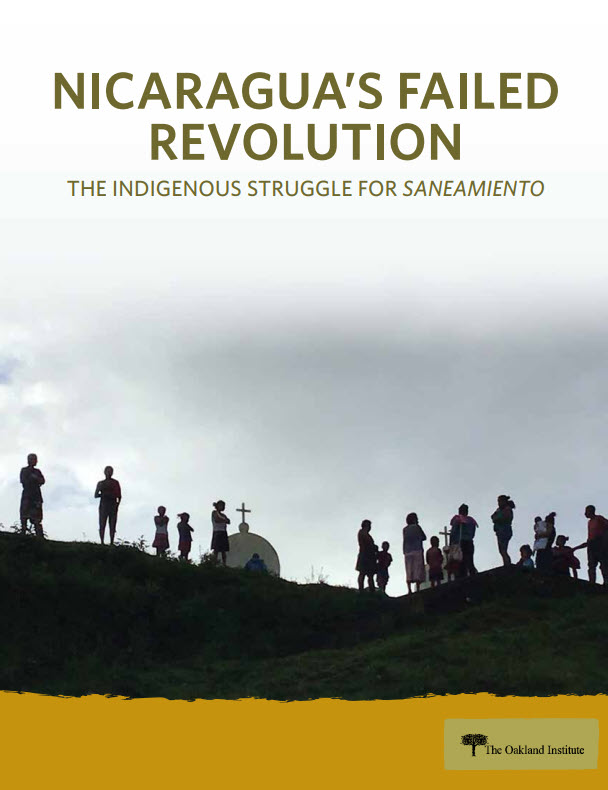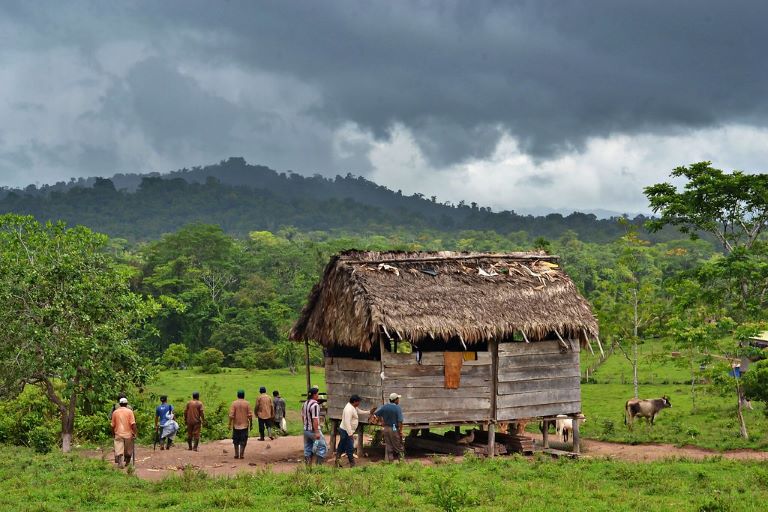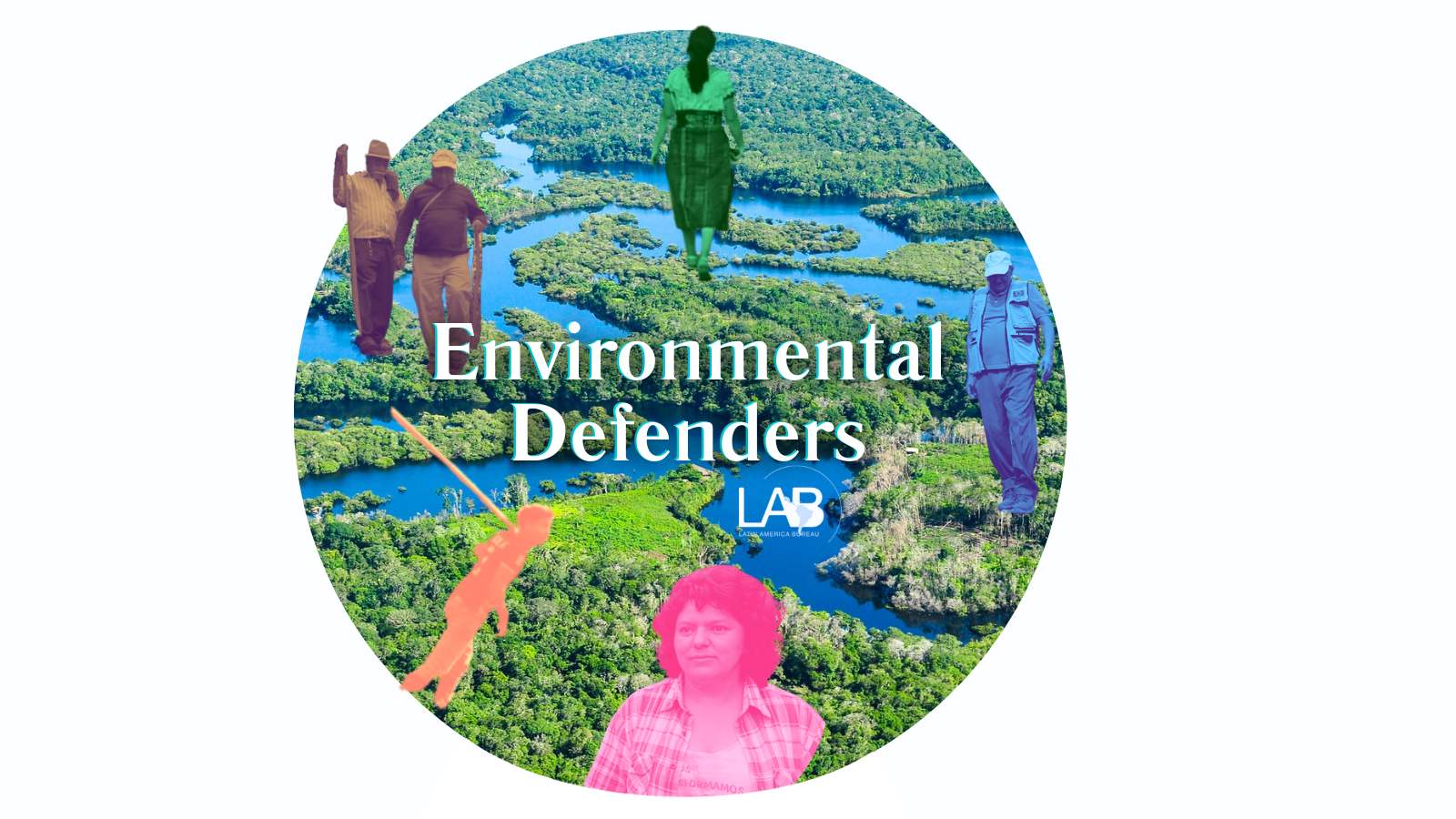This article is part of LAB’s new Blog Series, Environmental Defenders, inspired by the Global Witness report highlighting the terrible toll of killings of those who seek to defend their rights to land, water and their own way of life. The series is curated and edited by Katie Jones.
Other posts in the series can be seen here. Each new post will be released initially to LAB ‘patrons’ (paying subscribers), but will later be made available in full to all visitors to LAB’s website.
At the end of August 2021, news began to filter through of a massacre that had taken place at Kiwakumbaih, a sacred hill located in the Bosawás Biosphere Reserve in northern Nicaragua. Details were hazy at first, with initial media reports announcing the deaths of at least 13 people. The victims appeared to be members of the Mayangna and Miskitu Indigenous communities, their dismembered bodies showing signs of having been tortured before their deaths.
In Bosawás more than 13 indigenous people were tortured and killed. Video: Canal 10 Nicaragua, 26 August 2021.
Two weeks later, authorities reported that there were nine dead in ‘a dispute over mining between members of the two communities’. At a press conference, police revealed three of the accused had already been apprehended and a further 11 were being sought in connection with the crimes. It appeared to be a tragic case of inter-communal violence that the police were actively working to resolve.
However, in the days that followed, statements made by the victims’ relatives and organisations working with the affected communities cast doubt on the official narrative. Wilmor Waldan, whose son was reportedly shot and crucified in the attack, condemned the lack of investigation by police. He told Nicaragua Investiga that while some members of the Mayangna community had been arrested, the colonos, or settlers, allegedly responsible for the violence had yet to be brought to justice.
Meanwhile, according to a report in Confidencial, Nicaragua’s Center of Legal Assistance for Indigenous Peoples (Centro de Asistencia Legal a Pueblos Indígenas – CALPI), an organisation that supports Indigenous peoples in the region, similarly identified a group of armed colonos as the perpetrators of the killings. Members of the group – which has between 40 and 100 members, according to CALPI – were already known to police following a previous attack on another Indigenous community back in January 2020.
CALPI added that the massacre at Kiwakumbaih was the fourth such instance of an armed attack by settlers in 2021 alone. These events have formed part of a systematic campaign of violence that is being waged against Nicaragua’s indigenous peoples.
Indigenous people denounce a major invasion of the Bosawás Reserve by ‘colonos’. Video: Vos TV, 15 July 2021.
Endless Incursions onto Autonomous Lands
The Mayangna and Miskitu are just two of five Indigenous and Afro-descendant peoples whose ancestral territories lie along Nicaragua’s Caribbean coastline. When Spanish colonialists invaded during the 16th and 17th centuries, indigenous peoples inhabiting this region were shielded by the challenging geographical terrain of mountains, rainforest and swamps that separate them from the rest of the country. They were later joined by African slaves who, having been transported to the Caribbean by the British, escaped and joined to form distinct communities known today as the Kriol.
The area is demarcated into northern (Región Autónoma de la Costa Caribe Norte – RACCN) and southern regions (Región Autónoma Caribe Sur – RACCS) that have been governed autonomously since 1987, when the Sandinista government made substantial concessions to resolve tensions with Miskito and other indigenous communities of the area. Legislation recognised the multi-ethnic nature of the population, as well as the rights of Indigenous and Afro-descendant peoples to collectively hold lands and natural resources.

But almost since its inception, this autonomous status has been called into question owing to persistent – and often violent – incursions by outsiders seeking to gain access to natural resources. Successive administrations have continued to promote the existence of so-called ‘empty lands’ in the autonomous zones, to lure in foreign investors and Nicaraguan colonos set on gold mining, logging and cattle ranching. This dynamic has led to violent conflicts and the forced displacement of coastal communities.
A Landmark Case? Awas Tingni v. Nicaragua
Unfortunately, such incursions continue, despite a landmark judgment issued by the Inter-American Court of Human Rights (IACHR) in the case of Awas Tingni v. Nicaragua. The IACHR’s 2001 decision upbraided the nation’s government, after it granted a logging concession to a Korean lumber company in Mayangna territory. Ruling in favour of the Awas Tingni community, the Court instructed the State to create an ‘effective mechanism for the delimitation, demarcation and titling’ of communal lands held by Nicaragua’s indigenous peoples. However, these measures are yet to be fully implemented.
Territorial governance in the Awastingni. Video: Canal 10 Via, 25 February 2021
One person involved in the Awas Tingni case whose work seeks to implement the protections mandated by the Court’s judgment is Lottie Cunningham Wren, a Miskitu lawyer, environmentalist and activist who founded the Center for Justice and Human Rights of the Atlantic Coast of Nicaragua (Centro por la Justicia y Derechos Humanos de la Costa Atlántica de Nicaragua – CEJUDHCAN) in 2003.
Webinar with Right Livelihood Laureate Lottie Cunningham Wren. Webinar starts at 1:30. Video: Right Livelihood, 26 November 2020.
Working with the CEJUDHCAN, Cunningham has provided educational programmes and legal assistance to communities throughout the autonomous regions, so that they can exercise their communal land rights in response to increasing external encroachment. The lawyer has devoted herself tirelessly to this cause for over 25 years, as one of the most recognised environmental and human rights defenders in the country.
Her activism has scored a number of victories, including a recent call to halt the development of Nicaragua’s Interoceanic Grand Canal, a megaproject designed to surpass its Panamanian rival, and whose proposed route would have passed through the heart of Indigenous territory (see The Nicaragua Grand Canal – Economic Miracle or Folie de Grandeur by Russell White, LAB, 2015, available from Practical Action Publishing).
Born in the northern RACCN along the banks of the Río Coco bordering Honduras, Cunningham is unequivocal in her assessment of the damage being caused by the government’s disregard for the wellbeing of her people:
‘The invasions are undermining the ecological roots of our culture. Miskitu people have taken care of the … forest and rivers for more than 2,000 years, but the settlers are destroying the forest and poisoning the rivers.’
In a webinar with the Oakland Institute, a policy think tank specialising in social, economic and environmental issues, she added ‘the settlers do not share Indigenous values or culture, and are not respecting indigenous practices. Liwa mairin, our river spirit, is dying. Duende, our forest spirit, is dying. We are in an ecocultural crisis.’
The Daily Risks of a Culture of Impunity
Cunningham’s defence of marginalised communities and the lands they depend on is not without cost – it has made her a clear target to the powerful interests that she opposes. Alongside her colleagues at CEJUDHCAN, in recent years Cunningham has been targeted with death threats and was fortunate to escape unharmed following a failed kidnap attempt in 2015. Subsequently, the Inter-American Commission on Human Rights (IACHR) ordered the Nicaraguan government to guarantee her protection from harm, yet the climate of fear and insecurity in which she works persists.
Her experiences reflect the dangers faced by environmental defenders in Nicaragua where in 2020, 12 environmental defenders were killed, according to a recent report published by Global Witness.
Faced with escalating attacks on Indigenous and Afro-descendant communities, the toll on Cunningham and others like her is profound. As she explained in a video for the Right Livelihood Foundation:
“In the course of defending Indigenous communities we have been threatened with death, where we’ve received text messages on our phones advising us to prepare our graves because the next deaths will be ours. On the other hand, the intimidation by the authorities … [and] the defamation and discrediting of our work as human rights defenders has been very traumatic for us due to the fear, worry and constant threats.”
Protection from harm remains elusive for environmental defenders in a country where a culture of impunity is fomented by a government that brooks no challenges to its authority. While institutional mechanisms exist through which complaints can be lodged, these often fall on deaf ears, leaving defenders with little recourse but to seek international recognition of their plight.
Cunningham’s advocacy on behalf of Indigenous and Afro-descendant peoples has secured the extension of precautionary measures to cover 12 communities in the autonomous zones. However, such measures can only be effective if the State accedes to the demands of international bodies. Cunningham has described how since the Inter-American Commission granted precautionary measures, the Nicaraguan government has failed to engage in dialogue with those at risk, leaving people as fearful for their lives as ever.
Until the State is compelled to fulfil its obligations towards environmental defenders and their wider communities, atrocities such as those at Kiwakumbaih will be repeated, leading to an ever more uncertain future for Nicaragua’s Indigenous and Afro-descendant peoples. To the voice of Cunningham and those that seek to defend the natural world we must add our own, because the ecocultural crisis of which she speaks ultimately affects us all.
Main image: Mayangna people gather for a meeting. Mongabay/Flickr
Dorian Martinez is a researcher with an interest in indigenous and tribal peoples’ rights in the Americas. He holds a Master’s degree in Human Rights from Birkbeck College, University of London, and spent eight months teaching English and volunteering in Nicaragua and Guatemala in 2016.


